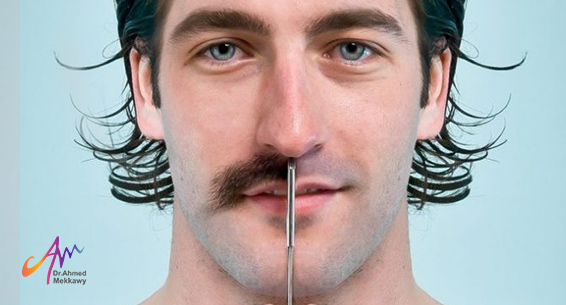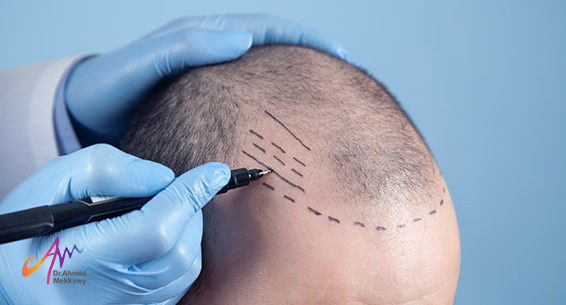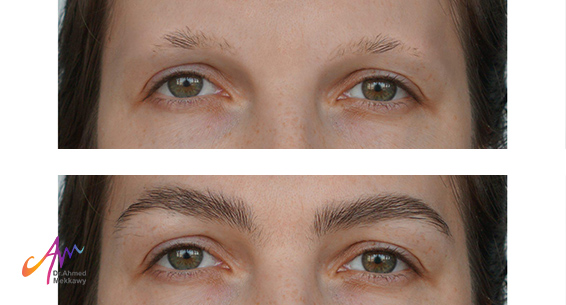Mustache Transplantation

Mustache Transplantation
Have you ever thought about having a mustache? Some men lack facial hair for various reasons, making it difficult for them to grow their mustaches. As a result, they now turn to the technique of mustache transplantation. Learn how to transplant a mustache using modern and completely safe methods in the following article.
Mustache Transplantation:
The transplanted hair grows naturally, adopting the characteristics of the area where the surgeon harvested it. It maintains the same density, length, and texture. Once the final results of the transplantation appear, you can treat it as natural hair. You can trim, cut, shave, or even style it. For natural-looking results, the surgeon ensures that hair follicles are distributed evenly and naturally during transplantation. The more experienced the surgeon is in hair transplantation, the more natural the results will appear. Therefore, choose the best surgeon, Dr. Ahmed Mekkawy, a specialist in plastic surgery and hair transplantation.
The surgeon will also carefully extract hair follicles from the back of your head to avoid leaving any visible gaps in the donor area, known as the donor region.
Candidates for Mustache Transplantation:
You can be an ideal candidate for mustache transplantation if you meet the following conditions:
- You are unable to grow facial hair.
- You are in good health and do not suffer from any chronic diseases.
- You have sufficient hair at the back of your head that the surgeon can use for the transplantation.
- You are a non-smoker or can quit smoking before the procedure and during recovery.
When visiting the best hair transplant surgeon in Egypt, Dr. Ahmed Mekkawy, he will conduct a clinical examination to determine the donor area and the number of follicles that will be transplanted to the mustache area. He will also identify the necessary tests and examinations to be performed before the mustache transplantation, along with reviewing your family medical history to assess the likelihood of potential side effects during the recovery phase to prevent or manage them.
Dr. Ahmed Mekkawy listens to the individual's requirements regarding the desired shape and density of the mustache. He may even bring a picture of the desired mustache style. The desired shape of the mustache is drawn and defined to ensure that the person achieves his dream look. Typically, the density of the mustache hair does not exceed 30 grafts per square centimeter.
Mustache Hair Transplantation Using Follicular Unit Extraction (FUE):
The surgeon performs Mustache hair transplant procedures by transferring some hair follicles from the scalp to the face to grow a mustache. This technique is for men who are unable to grow facial hair. The process is done through the FUE hair transplant technique, which is non-surgical, leaving no scars, and using only local anesthesia.
The FUE technique involves extracting hair follicles from the back of the head and then transplanting them into the desired areas. In the case of mustache transplantation, the specific area to be transplanted is above the lips, with each follicle transplanted individually.
This technique has gained popularity recently due to its success rate of over 99% and the fact that it allows facial hair transplantation without leaving any scars on the face or scalp.
Preparing for Mustache Transplantation Using FUE:
- You must shave your hair before extracting follicles from the back of the head to facilitate identifying the follicle locations and their numbers.
- If you are coming from another country, arrange accommodation and transportation before your visit to facilitate your stay.
- Mustache transplantation is a simple cosmetic procedure that does not require a lengthy recovery period. Side effects may include some swelling, bruising, and discomfort for a short period.
- After the hair transplantation, the surgeon will prescribe pain relievers to manage discomfort and alleviate swelling and bruising.
- During this period, it's important to follow the surgeon's instructions to achieve the best possible results and minimize side effects.
When do the final mustache transplantation results appear?
After the hair transplant, some scabs may form at the transplantation site, and the transplanted hair will begin to fall out after about four weeks as a natural part of its growth cycle. However, don't worry, as the hair will regrow permanently. Permanent results appear within three to four months and continue to improve over time. The transplanted hair grows overtime as if it was a natural part of the area, without shedding and without the need for additional cosmetic procedures.
Advantages of FUE Mustache Transplantation:
The FUE technique for mustache transplantation is safe and non-surgical, leaving no scars. You can also consider beard transplantation using the same technique and steps to achieve the desired appearance. For more information about hair transplantation, the different techniques used, and details about the appropriate treatment for you, book an appointment for a consultation with Dr. Ahmed Mekkawy, a specialist in plastic surgery and hair transplantation.
This content has been reviewed by Dr. Ahmed Mekkawy, a consultant in cosmetic surgery, body contouring, and natural hair transplantation.


.jpg)